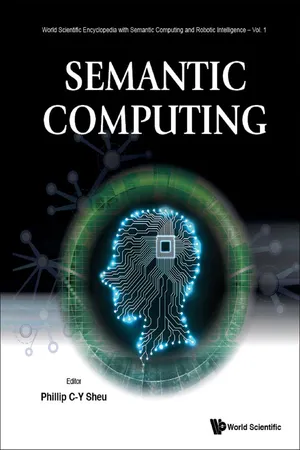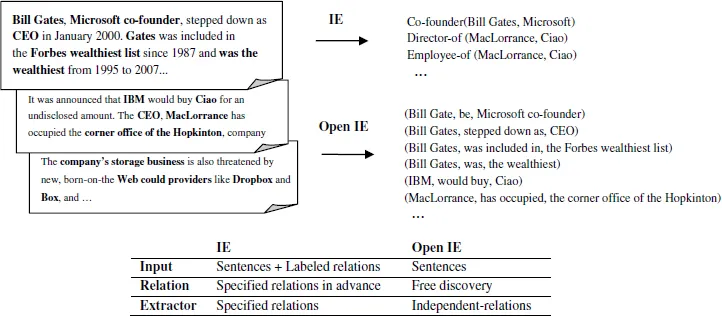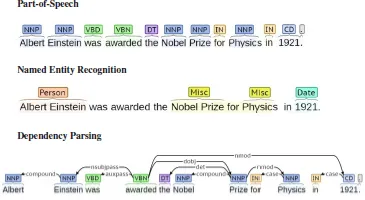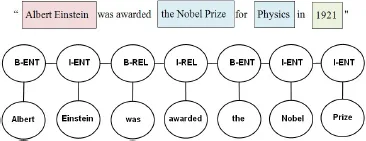
- 252 pages
- English
- ePUB (mobile friendly)
- Available on iOS & Android
Semantic Computing
About this book
-->
As the first volume of World Scientific Encyclopedia with Semantic Computing and Robotic Intelligence, this volume is designed to lay the foundation for the understanding of the Semantic Computing (SC), as a core concept to study Robotic Intelligence in the subsequent volumes.
This volume aims to provide a reference to the development of Semantic Computing, in the terms of "meaning", "context", and "intention". It brings together a series of technical notes, in average, no longer than 10 pages in length, each focuses on one topic in Semantic Computing; being review article or research paper, to explain the fundamental concepts, models or algorithms, and possible applications of the technology concerned.
This volume will address three core areas in Semantic Computing:
-->
- Understanding the (possibly naturally-expressed) intentions (semantics) of users and expressing them in a machine-processable format: Semantics description languages, ontology integration, interoperability
- Understanding the meanings (semantics) of computational content (of various sorts, including, but is not limited to, text, video, audio, process, network, software and hardware) and expressing them in a machine-processable format in Multimedia, IoT, SDN, wearable computing, interfacable with mobile computing, search engines, question answering, web services, to support applications in biomedicine, healthcare, manufacturing, engineering, education, finance, entertainment, business, science and humanity
- Mapping the semantics of the user in context for content retrieval, management, creation in the form of structured data, image and video, audio and speech, big data, natural language, deep learning.
--> -->
--> Contents:
- Part 1: Understanding Semantics:
- Open Information Extraction (D-T Vo and E Bagheri)
- Methods and Resources for Computing Semantic Relatedness (Y Feng and E Bagheri)
- Semantic Summarization of Web News (F Amato, V Moscato, A Picariello, G Sperlí, A D'Acierno and A Penta)
- Event Identification in Social Networks (F Zarrinkalam and E Bagheri)
- Community Detection in Social Networks (H Fani and E Bagheri)
- High-Level Surveillance Event Detection (F Persia and D D'Auria)
- Part 2: Data Science:
- Selected Topics in Statistical Computing (S B Chatla, C-H Chen and G Shmueli)
- Bayesian Networks: Theory, Applications and Sensitivity Issues (R S Kenett)
- GLiM: Generalized Linear Models (J R Barr and S Zacks)
- OLAP and Machine Learning (J Jin)
- Survival Analysis via Cox Proportional Hazards Additive Models (L Bai and D Gillen)
- Deep Learning (X Hao and G Zhang)
- Two-Stage and Sequential Sampling for Estimation and Testing with Prescribed Precision (S Zacks)
- Business Process Mining (A Pourmasoumi and E Bagheri)
- The Information Quality Framework for Evaluating Data Science Programs (S Y Coleman and R S Kenett)
- Part 3: Data Integration:
- Enriching Semantic Search with Preference and Quality Scores (M Missikoff, A Formica, E Pourabbas and F Taglino)
- Multilingual Semantic Dictionaries for Natural Language Processing: The Case of BabelNet (C D Bovi and R Navigli)
- Model-Based Documentation (F Farazi, C Chapman, P Raju and W Byrne)
- Entity Linking for Tweets (P Basile and A Caputo)
- Enabling Semantic Technologies Using Multimedia Ontology (A M Rinaldi)
- Part 4: Applications:
- Semantic Software Engineering (T Wang, A Kitazawa and P Sheu)
- A Multimedia Semantic Framework for Image Understanding and Retrieval (A Penta)
- Use of Semantics in Robotics — Improving Doctors' Performance Using a Cricothyrotomy Simulator (D D'Auria and F Persia)
- Semantic Localization (S Ma and Q Liu)
- Use of Semantics in Bio-Informatics (C C N Wang and J J P Tsai)
- Actionable Intelligence and Online Learning for Semantic Computing (C Tekin and M van der Schaar)
-->
--> Readership: For students and researchers of Computer Science. -->
Keywords:Artificial Intelligence;Semantic Computing;Thinking Machine;RoboticsReview: Key Features:
- World Scientific Encyclopedia with Semantic Computing and Robotic Intelligence is the most up-to-date on the subject that is available in the market today
- Supported by its sister e-journal available at http://www.worldscientific.com/worldscinet/escri, where new articles are released online regularly on a monthly basis
- Once every 6-months, the articles published in the e-journal will be compiled into a volume as part of the World Scientific Encyclopedia with Semantic Computing and Robotic Intelligence, published as ESCRI collection
Frequently asked questions
- Essential is ideal for learners and professionals who enjoy exploring a wide range of subjects. Access the Essential Library with 800,000+ trusted titles and best-sellers across business, personal growth, and the humanities. Includes unlimited reading time and Standard Read Aloud voice.
- Complete: Perfect for advanced learners and researchers needing full, unrestricted access. Unlock 1.4M+ books across hundreds of subjects, including academic and specialized titles. The Complete Plan also includes advanced features like Premium Read Aloud and Research Assistant.
Please note we cannot support devices running on iOS 13 and Android 7 or earlier. Learn more about using the app.
Information
Part 1
Understanding Semantics
Open information extraction
Ryerson University, Toronto, ON, Canada
*[email protected]
†[email protected]
1.Information Extraction and Open Information Extraction
2.First Open IE Generation







2.1.Advantages and disadvantages
Table of contents
- Cover
- Halftitle
- Series
- Title
- Copyright
- Foreword
- Contents
- Part 1: Understanding Semantics
- Part 2: Data Science
- Part 3: Data Integration
- Part 4: Applications
- Subject Index
- Author Index